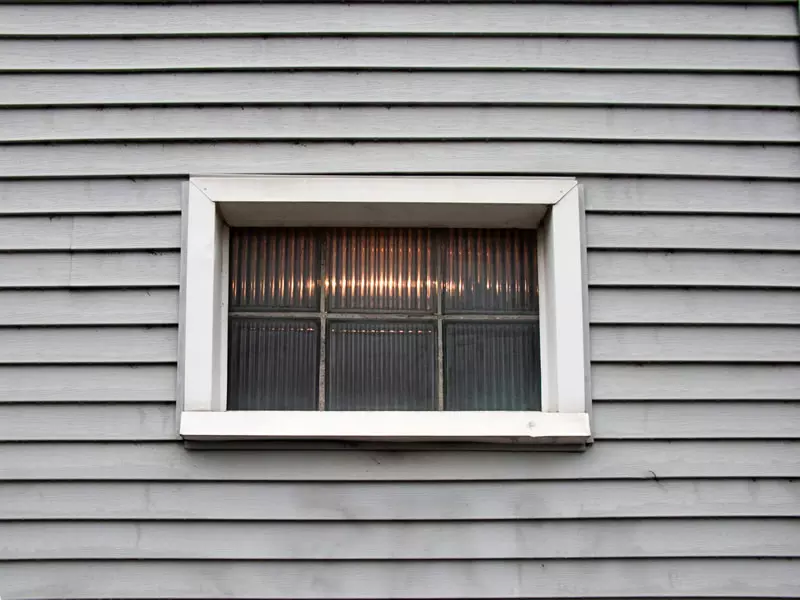
Your home siding needs to be cared for in the wintertime. It’s easy to think that just because it’s not wood – instead, it’s a polymer-like material – that you don’t need to do anything to winterize it. However, this isn’t the case at all.
You need to care for your siding properly, which includes making sure that it can get the winter in top condition. Although you don’t need to do anything drastic, such as wrap your entire home in plastic wrap as if it were a rosebush, you should follow these tips to keep it in great shape. Otherwise, things won’t so pretty in the spring.
Don’t Install Your Siding in Freezing Temperatures
Some siding installation companies will approach homeowners in the wintertime. They’ll offer low, off-season rates in the hopes of getting business when things are slow. However, unless you live in a place where there’s a warm climate year-round, you definitely don’t want to take them up on this deal. Why? Because certain types of siding are prone to contracting in cold weather.
When the weather warms up again, they’ll expand, causing them to bow in the middle. This can lead to cracking and a number of other problems. Basically, your siding will have to be redone sooner rather than later.
Don’t Power wash It in Cold Weather
Along those lines, you don’t want to power wash your siding in cold weather. Sure, you might be tempted to remove the salt and other debris, but wait until the weather warms up and stays that way. Water can in between your individual pieces of siding, and then when it freezes again, the siding will bow outward.
This constant movement can lead to cracking, as we explained above. Once your siding starts to crack, other things can get into it (including some wildlife, if the cracks grow large enough) leaving your siding and the entire exterior of your home in danger.
Don’t Paint Your Siding
We need to preface this by saying that some types of siding – including wood-based siding – can be painted. However, if you paint standard plastic or polymer-based siding, you could void the warranty. On top of this, the paint will crack and peel in cold temperatures, and begin to look rather messy.
The cracked paint can become a home to moisture, causing mold to grow in between the paint and the siding once the weather warms up. Essentially, you could end up causing quite a bit of damage, just by slapping on a coat of paint or two.
Make Sure To Keep Sources of Heat Away From It
Although the heat vent for your furnace is probably located towards the base of your house – not where your siding is located, you should double check to make sure. In addition to this, if you use your grill outside (and yes, some people use theirs during the winter), you want to keep it at least 15 feet away from your house.
The same goes for outdoor heaters. Any source of heat can cause your siding to warp and bend, leading to permanent damage. If you allow the damage to get bad enough, your siding will need to be replaced.
Check Your Caulking and Edge Pieces
Before winter comes, check the caulking between your home siding and window frames, as well as the edge pieces of your siding – those spots where the corners of your house are located. The caulking is designed to insulate your home, providing just that little extra bit of help to keep your home consistently warm and your heating costs low.
Also, keep in mind that the edge pieces are some of the most important, and most vulnerable parts of your siding. They cover the edges and keep everything safe and sound. If something goes wrong with those edges, then all of your siding is in danger.
Choose Fiber Cement Siding
If you live in an area of the country that receives plenty of cold weather – and a lot of snow and other precipitation to go along with it – then you should consider having fiber cement siding placed on your house. This type of siding is made up of a combination of cellulose fibers, cement, and sand, making it incredibly sturdy. It’s designed to survive even the toughest freeze-thaw cycle.
Other types of home siding are prone to going through expansions (in warm weather) and contractions (in cold weather), meaning that over time, their surface tension will give and they will crack. Fiber cement siding doesn’t do this. It’s a workhorse that stays the same, no matter the season. On top of that, it’s thicker than the other types of siding, and it pairs well with insulation, meaning that it’s very energy efficient. Your heating and cooling bills will go down if you choose this type of siding.
